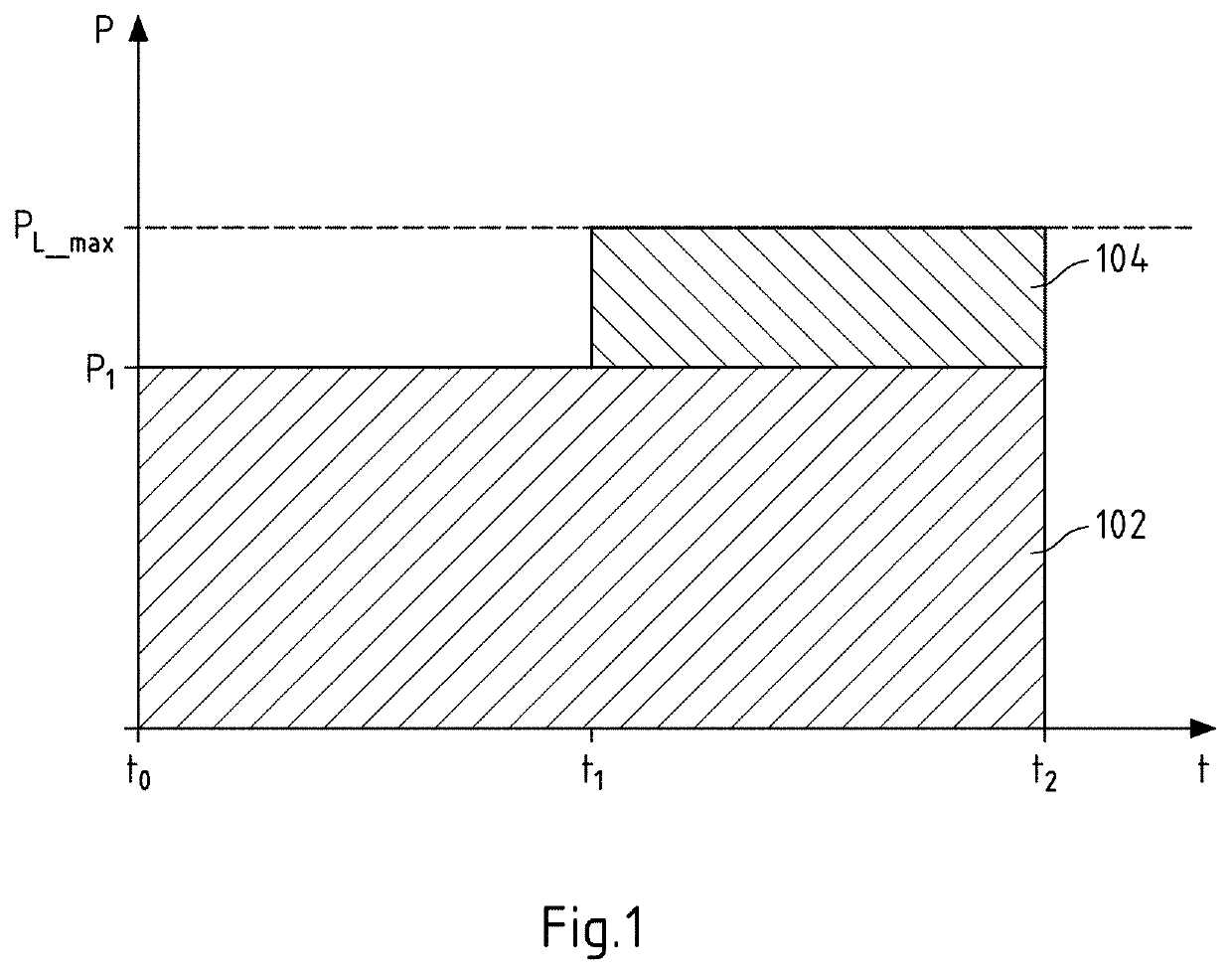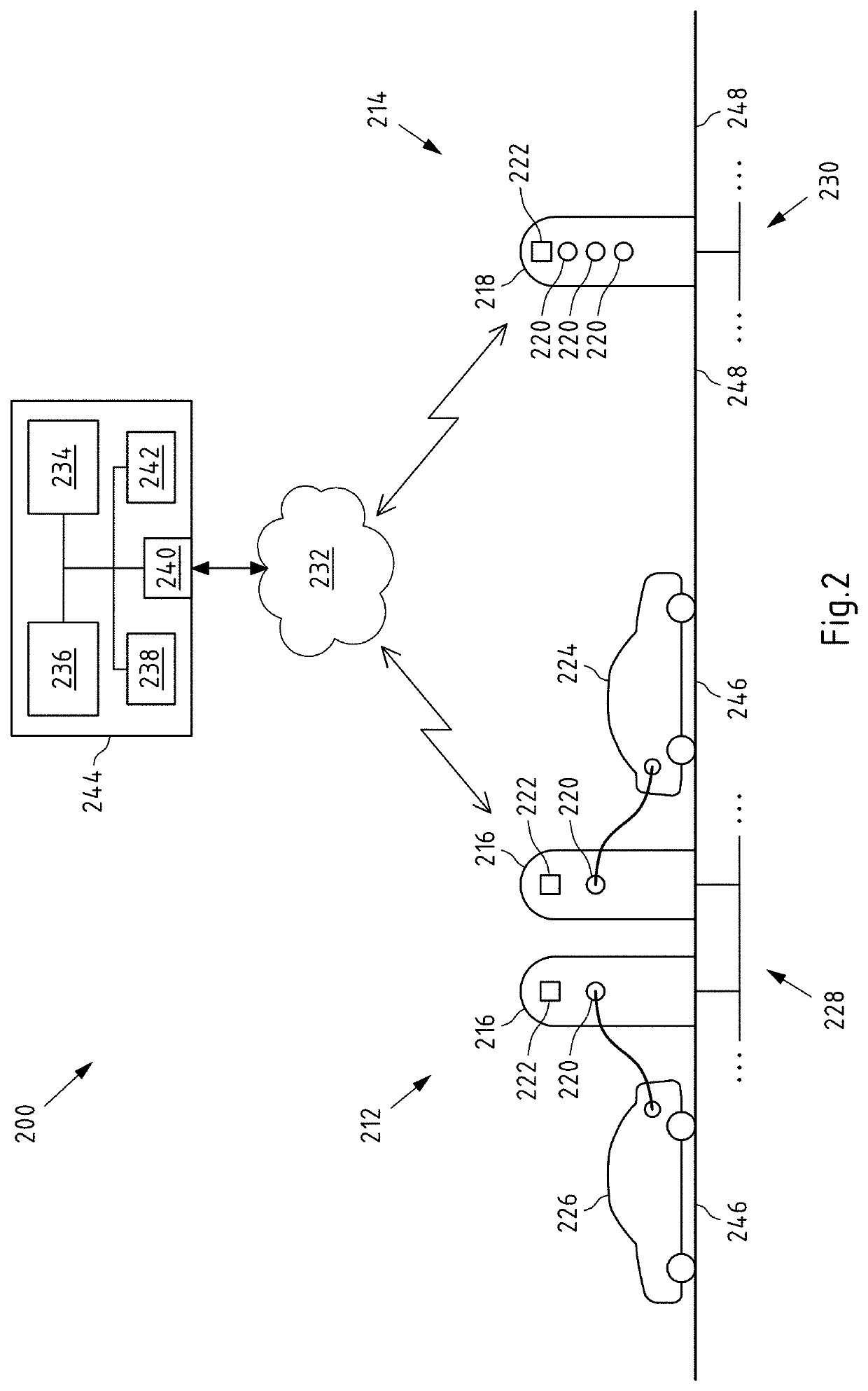Charging system for electric vehicles
a charging system and electric vehicle technology, applied in the direction of charging stations, electric devices, transportation and packaging, etc., can solve the problems of limited power available for charging rarely using the option to specify the desired amount of energy, and the inability to charge a further electric vehicle at a charging station, etc., to achieve the effect of optimizing the operation of the charging station, increasing the user's friendliness, and improving the efficiency of the charging station
- Summary
- Abstract
- Description
- Claims
- Application Information
AI Technical Summary
Benefits of technology
Problems solved by technology
Method used
Image
Examples
Embodiment Construction
[0080]FIG. 2 shows a schematic view of an embodiment of a charging system 200 according to the present application. The charging system 200 comprises a plurality of charging stations 216, 218 and at least one charging profile determination module 234, for example, in the form of a control module, such as a neural network or a control model based on a machine learning algorithm.
[0081]In the present example, in particular, two charging stations 216 each having one charging point 220 are grouped into a charging (station) arrangement 212. The charging arrangement 212 and the charging stations 216 of the charging arrangement 212, respectively, are connected to a first supply power grid 228, for example, a first local power grid 228, and are located at a first location.
[0082]Further, by way of example, a further charging station 218 having three charging points 220 is arranged. In the present embodiment, the charging station 218 is connected to a further supply power grid 230, for example...
PUM
 Login to View More
Login to View More Abstract
Description
Claims
Application Information
 Login to View More
Login to View More - R&D
- Intellectual Property
- Life Sciences
- Materials
- Tech Scout
- Unparalleled Data Quality
- Higher Quality Content
- 60% Fewer Hallucinations
Browse by: Latest US Patents, China's latest patents, Technical Efficacy Thesaurus, Application Domain, Technology Topic, Popular Technical Reports.
© 2025 PatSnap. All rights reserved.Legal|Privacy policy|Modern Slavery Act Transparency Statement|Sitemap|About US| Contact US: help@patsnap.com



